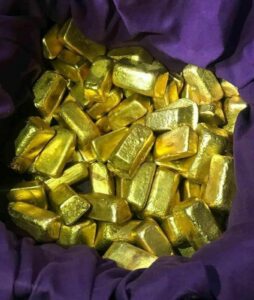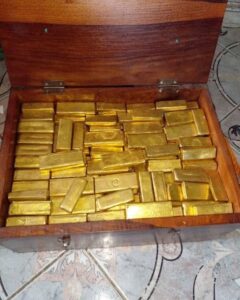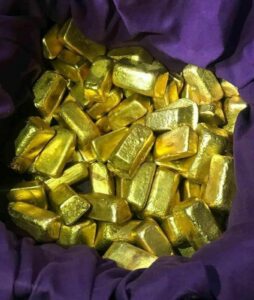



Gold bars are refined, man-made blocks of gold that are produced by gold refineries or mints. Unlike gold nuggets, which occur naturally, gold bars are created by melting down gold and casting or minting it into uniform shapes for easier storage, trading, and investment.
Key Facts About Gold Bars
1. Purpose
Gold bars are primarily used for:
- Investment (as a store of value or hedge against inflation)
- Central bank reserves
- International trade settlements
- Jewelry and industrial supply
2. Types of Gold Bars
There are two main types:
- Cast Bars (Ingot):
- Made by pouring molten gold into molds.
- Rougher, more rustic appearance.
- Each bar is unique in shape and finish.
- Minted Bars:
- Made by stamping gold blanks with precision.
- Sleek, shiny, and uniform.
- Usually come with detailed inscriptions and packaging.
3. Sizes and Weights
Gold bars come in many sizes, from tiny to massive. Common sizes include:
- 1 gram
- 5, 10, 50, 100 grams
- 1 kilogram (1,000 grams)
- 400-ounce (approx. 12.4 kg) – Standard for central banks and big investors.
4. Purity
Most gold bars have a purity of 99.9% (24-karat) or higher. You’ll often see them marked as:
- .999 or .9999 fine gold
- With official stamps showing weight, purity, serial number, and refinery mark.